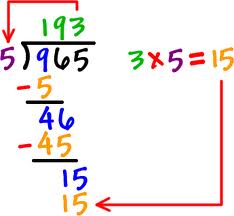Meaningless Means

Quick. What’s the mean?
Does your grade point average mean anything? To answer that question, let’s ask another one. Is this true or false?
The distance between 78 and 79 is the same as the distance between 96 and 97.
It may seem like a simple answer but it’s actually rather subtle. As with all good questions, the answer is “It depends”.
Let’s say that you’re measuring a distance in meters. You’re standing at meter zero. On a straight line, Object A is 78 meters away from you, Object B is 79 meters away, Object C is 96, and Object D is 97. Is the distance between Object A and B the same as the distance between Objects C and D?
Well, yes it is. After all a meter is a meter. A meter has a standard, universal definition. In fact, it’s one ten-millionth of the distance from the North Pole to the equator, on an arc passing through Paris*. (Those pesky French defined it). Because we have a standard and objective way of measuring a meter, we can safely conclude that the distance between A and B is the same as that between C and D.
Let’s look at a different example: ice dancing in the Olympics. The winners receive Gold, Silver, and Bronze medals. Is the distance between Bronze and Silver the same as the distance between Silver and Gold? Well, no. For one thing, we don’t have a standard, objective way to measure. Judging ice dancing is subjective. The Russian and American judges may well have different points of view.
Additionally, most athletes would say that improving performance becomes increasingly difficult the closer you get to the top. Let’s say that you can run a mile in ten minutes. You work hard, improve your speed, and get your time down to nine minutes. (Congratulations). Let’s compare your level of effort to Mary who runs a six-minute mile and improves her time to five minutes. You’ve shaved a minute off your time and she’s shaved a minute off her time but, really, who has to work harder? I think we’d all agree that it’s Mary. So, the distance between ten minutes and nine minutes is not the same as that between six minutes and five.
Now, let’s calculate some means. Let’s say we have three buildings. One is 30 meters tall, the second is 60, and the third is 70. What’s the mean? We add up the numbers (160) and divide by the number of numbers (3) and find that the mean is 53.3 meters. Does that make sense? Sure it does, because we have a standard, objective way to measure a meter and the points on the scale are equidistant.
Let’s do the same for ice dancing medals. We’ll give three points to a gold medal, two to a silver, and one to a bronze. Now we can add up the numbers, divide by the number of numbers, and calculate a mean. Does it make sense? Well, no. There’s a little sleight of hand here. We’ve changed from rankings that are not equidistant (gold, silver, bronze) to numbers that are equidistant. It’s a bit slippery. It’s the kind of calculation that you might expect from major banks rather than from good researchers.
What does this have to do with your grade point average? Well, your GPA is much more like ice dancing medals rather than meters. The distance between and F and a D is much shorter than the distance between a B and an A. Since the points on the scale are not equidistant, it doesn’t make sense to calculate a mean. Remember that the next time someone asks your GPA.
*Actually, the definition of a meter has changed since it originated. Here’s a good explanation.
Recruiting and The Triple Package

Hire her.
When I first started managing people, I took a series of short management courses offered by our Human Resources department. One course focused on how to recruit talented, high-potential employees. I knew how to identify specific skills (“Can you program in C++?”) but I didn’t really know how to identify motivation and potential.
A recruiter named Sarah taught the course and told us there were two profiles to look for. (Yes, we were profiling … but for a good cause). She had a name for each which I don’t remember so let’s just call them Profiles Y and Z. Here they are:
Profile Y – someone who attended an elite university, studied relevant topics, and made good grades. You would likely get someone who was smart and motivated. According to Sarah, making good grades was a critical differentiator. Some people qualify for elite universities and then coast – perhaps a sign of a sense of entitlement. The person might not be motivated.
Profile Z – someone who might have qualified for an elite university but couldn’t afford to go. He went to a state university, studied relevant topics, and made very good grades. He’s very confident and believes strongly in his own abilities. At the same time, he believes that other people may not recognize his talents and achievements. He has something to prove. He’s probably not the first-born child.
I thought about these profiles – and especially Profile Z – when I read about Amy Chua and Jed Rubenfeld’s concept of the Triple Package. Chua and Rubenfeld have studied ethnic cultures within the United States and asked a simple question: why is it that some cultures are more upwardly mobile than others?
According to Chua and Rubenfeld, Americans with different national heritages have markedly different educational and professional success rates. For instance, Cuban-, Lebanese-, and Nigerian-Americans tend to have higher success rates (on the whole) than do groups with similar ethnic or language backgrounds but different national ancestry. What makes them different?
Chua and Rubenfeld argue that the Triple Package makes the difference. There are three elements in the package:
“The first is a superiority complex — a deep-seated belief in their exceptionality. The second appears to be the opposite — insecurity, a feeling that you or what you’ve done is not good enough. The third is impulse control.”
Sound familiar? The first two concepts in the Triple Package correlate with two elements of Profile Z. The person (or the culture) feels exceptional and somewhat superior to other people (or cultures). At the same time, however, the person/culture has some sense of insecurity. They feel exceptional and they also want to be recognized as exceptional. They have something to prove.
The third element of the Triple Package is impulse control. This is what we used to call deferred gratification – the ability to defer short-term rewards for larger rewards in the future. I don’t remember it being part of Profile Z but it should be. Impulse control has been studied in a variety of ways – including the famous marshmallow experiments – and it seems to predict what my dear old Mom used to call “sticktoitiveness”. In other words, you better stick to it if you want to succeed.
What do we learn from all this? If you want to win the war for talent, you’ll need to hire intelligent, motivated people with a high degree of sticktoitiveness. Recruiting people with the Triple Package is a good place to start.
Better Decisions for Your Company – 2
 Yesterday we looked at the first three steps in Decide & Deliver: 5 Steps to Improving Your Organization’s Decision-Making. (The book is here; the white paper is here). Let’s look at the last two steps today.
Yesterday we looked at the first three steps in Decide & Deliver: 5 Steps to Improving Your Organization’s Decision-Making. (The book is here; the white paper is here). Let’s look at the last two steps today.
Step 4 – Build an Organization. The first three steps outline the decision making process. If you do all three of them well, the decision quality will improve. But, in addition to making decisions, you need to create an organization that is tuned for decision making. This especially affects those small but frequent operational decisions.
The authors suggest that the starting point is fairly simple: judge investments based on their ability to improve decisions and execution. You may want to include other criteria as well – competitive positioning, return on capital, and so on. But always be sure to include a decision quality objective as well.
The authors illustrate their point with the war for talent. Here’s the difference:
- Traditional approach: Are we winning the war for talent?
- Decision-centered approach: Do we put our best people in the jobs where they can have the biggest impact on decisions?
Looking at your organization from this perspective will change your understanding of how your best people should be deployed. You may find that executive and managerial positions are less “decision-critical” than you thought and many operational positions are more important. You’ll probably want to deploy your best people in different ways.
Step 5 – Embed Decision Capabilities. This one is “about making change stick” and runs in parallel with the other steps. In other words, it’s not the last step in a chronological sequence. Rather, it’s a concurrent step. You build a foundation, engage your best leaders, identify the decision-critical positions, redeploy people, and set audacious goals.
There are obstacles, of course. You may find that important decisions makers (and decision centers) may lose authority as decisions are pushed down and out. Other people may not want to change. They’re comfortable with their current routines. They may not change at all or they may apply the new method of decision making only to the easy decisions. These are all predictable issues. Be prepared for them.
What happens if you successfully complete all five steps? Performance will probably improve on key metrics like customer satisfaction, revenues, and profits. More importantly, you may just set the organization into a virtuous circle (as opposed to a vicious circle). Good decisions produce better decisions which attracts better talent which produce better decisions which … well, you get the idea.
Better Decisions for Your Company – 1
 Several years ago Marcia Blenko, Michael Mankins, and Paul Rogers (all Bain consultants) wrote a book called Decide & Deliver – 5 Steps to Breakthrough Performance in Your Organization. Recently, they converted it into a white paper. Since their research provides important clues for improving decision making, I’d like to summarize it today and tomorrow. I hope it will encourage you to read more – it’s useful stuff.
Several years ago Marcia Blenko, Michael Mankins, and Paul Rogers (all Bain consultants) wrote a book called Decide & Deliver – 5 Steps to Breakthrough Performance in Your Organization. Recently, they converted it into a white paper. Since their research provides important clues for improving decision making, I’d like to summarize it today and tomorrow. I hope it will encourage you to read more – it’s useful stuff.
Step 1 – Score Your Organization. Most of us don’t give our organizations a grade for the quality of our decisions. But we rate ourselves on most everything else, so why not decision making? The authors suggest a broad survey of managers and employees, followed by face-to-face interviews. Ask four basic questions:
- Quality — How often do you choose the right course of action?
- Speed — How quickly do you make decisions versus competitors?
- Yield – How often do you execute decisions as intended?
- Effort – Do you put the right amount of effort into making and executing decisions?
These are simple, straightforward questions but I suspect that most of our organizations don’t give much thought to them. Once you’ve gathered the information, Bain has a database of companies to benchmark against.
Step 2 – Focus on Key Decisions. You can’t evaluate every decision, so identify the critical ones in two different categories: 1) Big, high-value strategic choices – most of these are obvious. 2) Operating decisions that “are made and remade frequently and generate a lot of value over time.” These are less obvious but might include things like merchandising decisions. Companies often make millions of merchandising decisions; shifting even a small percentage from “bad” to “good” can make a huge difference.
To identify the most important decisions, consider two key attributes:
- Value at stake – don’t forget to multiply value by frequency. Doing so will help you identify high-value operating decisions.
- Degree of management attention required – can the decision be pushed down the hierarchy and out toward the customer or does it percolate upward? Decisions that require a lot of attention often provide “greater scope for improvement.”
The authors also suggest using the Decision X-Ray. When a decision goes bad, don’t just fix it. Study how the decision was made and identify the factors that caused it to fail. Then apply the lessons to future decisions.
Step 3 – Make Decisions Work. Four elements here: What, Who, How, and When.
- Clarify the What – don’t just focus on “whether-or-not” decisions – as in, “We need to decide whether or not to buy Company X”. Expand the decision, as in “What’s the best way to invest our capital?”
- Determine the Who – consider the acronym RAPID and identify people who need to Recommend, others who provide Input, others who need to buy into or Agree to the decision, someone(s) to make the final Decision, and others who Perform or execute the decision.
- Understand the How – how will you make the decision … by popular vote? By consensus? By a key executive?
- Make the When explicit – “A schedule ensures that decisions are quickly followed by action so that things can happen rapidly and the hurdle to reopen the decisions is high.”
Tomorrow: Steps 4 and 5: Build an Organization and Embed Decision Capabilities.
Braess’s Paradox and The Super Bowl

Of course they’ll win.
Braess’s paradox posits that adding capacity to a network can reduce the network’s performance. Conversely, removing links in the network can improve its performance.
Dietrich Braess, a German mathematician, originally identified the phenomenon in traffic flows. As new roads open up, overall traffic flows sometimes slow down. That’s certainly unexpected behavior.
The paradox illuminates the result of selfish choices in self-organizing networks. Let’s say you have a crowded network of roads. A new road opens up that appears to offer a faster route. Driver makes selfish choices and head to the new road, making it more crowded while not appreciably alleviating the rest of the network. The result: on average, it takes longer to get to the destination. (Conceptually, this seems similar to the paradox known as the tragedy of the commons).
Does it work? Well, in 1990 New York City temporarily closed 42nd Street, a major thoroughfare. People predicted disaster but traffic actually flowed more smoothly. In 2011, Los Angeles closed a ten-mile stretch of freeway for construction and predicted a traffic “jam of biblical proportions” (known sardonically as Carmaggedon). It turned out to be not so bad.
The paradox may also happen in other self-organizing networks, like your brain. New Scientist reports that certain brain injuries can result in loss of vision. Surprisingly, creating another lesion in another part of the brain can help restore partial vision. Nobody understands exactly why but, apparently, the new lesion removes links in the network and helps the overall network improve its performance.
The same phenomenon can affect your ability to make optimal choices. Let’s say you’re going to by a new car. To find the best one for your needs, you decide to closely review 1,000 makes and models. The result? You’re quickly overwhelmed. To improve performance, it’s better to winnow the field and evaluate fewer options rather than more.
Sports analysts believe that the paradox may also pertain to team sports. Some teams play better when their star player(s) is removed from the game. Why would that be? Think of a team as a network. The ball often moves to (and sometimes from) the star player in the network. The path to and from the star is the most heavily travelled link in the network. Removing that link means the network has to reorganize and redistribute. That can result in improved performance.
I think we saw Braess’s paradox in the Denver Broncos’ defense this past season. Many observers consider Von Miller the best player on the Broncos’ defense. Miller was suspended for the first six games of the season. When Miller did not play, the Broncos actually recorded more sacks per game (a key defensive statistic) than they did when Miller played. In other words, the network reorganized itself and performed better.
Braess’s paradox may be very good news for the Broncos in the upcoming Super Bowl. The team has lost a number of key defensive players (including Miller) to injury. As the defensive network reorganizes itself, its performance may well improve. We already know that the Broncos have an unstoppable offense. As Braess’s paradox works its magic on the defense, the team is almost guaranteed a victory.